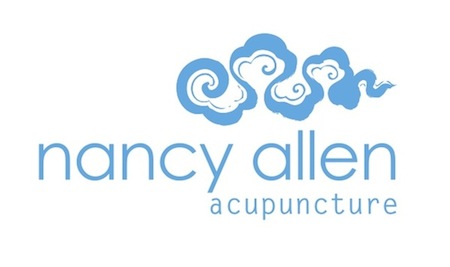Two winters ago, I got the dreaded strep throat - painful swallowing, white goop in the back of the throat, vomiting and headache. The predominant message concerning strep bacteria is that it is dangerous, can lead to rheumatic fever and heart valve complications, and that one should quickly take antibiotics.
I did go straight away to the doctor and took what was prescribed - Amoxicillin - the most widely used treatment for strep. By day three, my entire body broke out in unbearably itchy welts. I went straight to the ER where the doctor looked at me cross eyed when I suggested it was a drug reaction. She prescribed me steroids for the hives, which did nothing except keep me awake half the night.
I threw out the pills and turned to Eastern Medicine, which offers many formulas that can kill viruses and bacteria effectively at specific stages of disease, and have been used for centuries. I found, through a certified herbalist, a modification of a centuries old formula called Chuan Xin Lian. Within hours, I was feeling better. Sore throat diminished immediately and hives dissipated. This story is not to say Eastern Medicine trumps Western. It is also not to say that one should never take antibiotics. If I were diagnosed with early stage Lyme’s Disease, I would probably take Doxycycline. What this story is meant to illustrate is that sometimes you can find better solutions than antibiotics.
By now, most people are aware that antibiotics should only be taken when necessary and that overprescription has led to antibiotic resistant strains of bacteria. But most people are not aware of just how many alternatives there are in the form of whole foods, herbs, and tinctures.
Antibiotic medications wipe out harmful as well as beneficial gut bacteria. Not only do we need beneficial gut bacteria for digestive function, it is the foundation of a healthy immune function. Many times I have treated patients who complain of frequent colds, bronchitis, and other infections, and discover that as a child they were given many rounds of antibiotics and their immune systems have never quite recovered.
So how can we heal our gut from past antibiotic use and how can we build a healthy gut so that it is optimal for all functions, including immunity?
1. Eat mostly warm nourishing food.
Eat a varied diet of foods, full of colors, and avoid too much cold and raw foods, iced drinks, juices, and cold smoothies that weaken digestive energy. Monkeys have much longer large intestinal tracts than humans because eating raw fruits requires a lot of digestive tract. We do not have the intestinal capacity to deal with excessive raw cold food. Your stomach appreciates warmth, and cooking food even a little bit will make it way more easy to absorb. Juicing may seem to give a boost of energy, but that is due to the glycemic spike in blood. The byproduct of juicing is a weakened digestive fire, and phlegm accumulation. Sometimes that manifests as allergies, skin problems, aching joints, and tendency toward bacterial infections.
2. Eat prebiotic foods.
Prebiotics are undigestible plant fibers that probiotics consume in your intestinal tract. They increase the population of friendly bacteria and block the growth of harmful bacteria. There is basically a perpetual battle going on in your body between good and bad bacteria. You feel better when the good guys are winning. Here are some examples of prebiotic foods to consume:
Garlic, onions, dandelion greens, asparagus, jicama root, oats, barley, jerusalem artichoke, leeks, apples, cocoa, burdock root, flax seeds, seaweed, radishes, coconut meat.
3. Eat foods or make teas that are naturally antibiotic.
These include oregano, thyme, garlic, ginger, pau d'arco (can find in tea form at any health store), echinacea, manuka honey, horseradish, cinnamon, onions, grapefruit seed extract, eucalyptus, cumin, olive leaf, apple cider vinegar, turmeric, cabbage, fermented foods (not including beer and wine, unfortunately).
4. Avoid these mucous forming foods that aid harmful bacteria:
The following are foods that are hospitable to bad bacteria like E. Coli, and that create phlegm and mucous throughout the respiratory tract and the joints. They make you foggy, fatigued, and prone to runny noses or skin irritations or an achy body:
Sugar, Alcohol, Dairy (including yogurt), Processed / chemical foods, Fried and greasy food
5. Cook at home often.
I know you’re busy, but try to get into the habit of making your own fresh food. Who knows what is hiding in your take out food. Unless you eat at a restaurant that carefully sources their food, what you will get is low quality mass produced food with a long shelf life, high sodium, preservatives, and lots of sugar.
6. Stock up on immune supporting remedies.
At the first sign of a pathogen, try some immune strengthening herbs. Here are the ones I use and combine, and they often keep a virus away or shorten its duration. If you can find a Chinese herb shop, these formulas are always stocked.
Sore throat or post nasal drip - Standard Process Throat Spray or Chuan Xin Lian
Feverishness and sore throat - Yin Qiao San
At first sign of a cold (sneezing, lethargy, runny nose, scratchy throat) - Olive Leaf Extract, Echinacea / Goldenseal tincture
Chills or upset stomach - Ginger tincture or fresh ginger root tea
Stomach Flu - Huo Xiang Zheng Qi Tang
May you have a healthy Fall and Winter.

